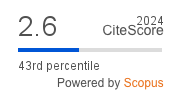EpilConNet: A Novel Multi-Class Epileptic Seizure Classification Model
DOI:
https://doi.org/10.4114/intartif.vol27iss74pp166-180Keywords:
Epilepsy, Machine Learning, Deep Learning, EEG, Seizure, Classification, Diagnosis, Concatenation networkAbstract
Epilepsy is a neurological disorder characterized by recurrent seizures, which can affect individuals of all age groups, but infants and older individuals are particularly vulnerable. Sudden epileptic attacks can pose significant risks and be life-threatening, impacting the overall quality of life of affected individuals. With the progress made in medical science, Electroencephalography (EEG) has emerged as a valuable tool for diagnosing and predicting seizure occurrences. The availability of wearable EEG devices, including caps and helmets, has become increasingly prominent in the market. As a result, there has been a recent surge in the development of deep learning-based systems. These systems are helpful for diagnosis in hospital settings and for mobile applications that provide timely warnings and predictions regarding seizure onset. Most of the existing state-of-the-art (SOTA) approaches focus on distinguishing between healthy and epileptic patients. Some studies categorize individuals into three classes: healthy, experiencing the onset of a seizure, or currently having a seizure, specifically focusing on mobile applications. However, limited literature is available on the five-class problem, which is valuable for localization and diagnosis in hospitals and mobile applications. In this regard, we propose our novel model, named EpilConNet, and conduct extensive experiments on a real-world dataset to demonstrate its efficacy in all modes of classification. EpilConNet results in a significant increase of 4% in accuracy in five-class classification.
Downloads
Metrics
Downloads
Published
How to Cite
Issue
Section
License
Copyright (c) 2024 Iberamia & The Authors

This work is licensed under a Creative Commons Attribution-NonCommercial 4.0 International License.
Open Access publishing.
Lic. under Creative Commons CC-BY-NC
Inteligencia Artificial (Ed. IBERAMIA)
ISSN: 1988-3064 (on line).
(C) IBERAMIA & The Authors









